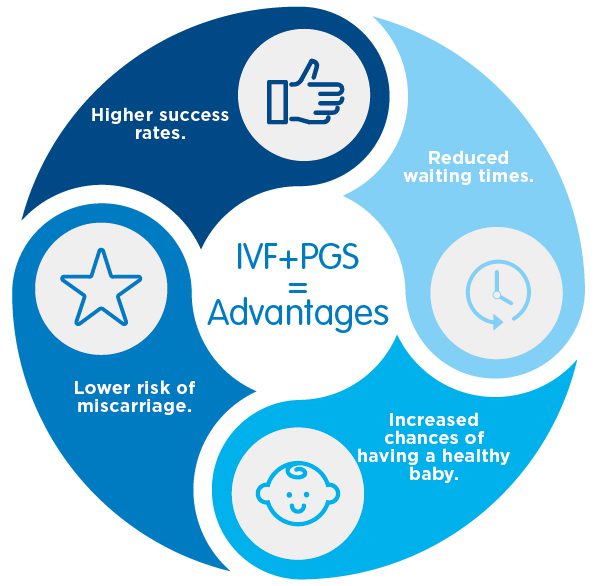PGS

P GS is the abbreviation for Pre Implantation Screening. This treatment is very much similar to the PGD treatment. PGS necessitate the inspection of the chromosomes of the embryos which have been conceived by the various IVF treatments for the various usual abnormalities. These chromosomal abnormalities can become the primary reason of the failure of miscarriages or also lead to failure in implantation of the embryo.
I n a few cases, the condition of failure cause the person to be affected by the Down’s syndrome.
How is PGD different from PGS?
P GS and PGD are very similar in nature as they both are used to test the chromosomal defects of the embryos, but still there is a minor difference between the two.
- PGD, Preimplantation genetic diagnosis is the process involving the diagnosis of the genetic defects before the implantation of the embryo created by the IVF into the uterus.
- PGS, Pre Implantation Screening is the process which involves the diagnosis of all kinds of chromosomal defects in the embryos. This can also be referred to as the basic screening of the embryo for normal chromosome copy number.
Procedure of PGS
Basically, the PGS is a six step process carried out by the experts IVF doctors. The procedure for the PGS is carried out in the following steps as stated:
Who should think to undergo PGS?
- Female with the age 38 and above
- Couples with the past history of IVF failure
- Individuals with diagnosed genetic diseases
- Individual who are carriers of chromosomal translocations
- Females with the past history of miscarriages
Risk associated with PGS
- Damaging of the embryos during the process of cell removal
- High probability of the embryos with chromosomal defects, thus, not apt for the transfer to womb for further development.
- It might be possible that a miscarriage may occur even after this process of PGS is carried before the embryo transfer.

 WhatsApp us
WhatsApp us